Updated: 10 August 2019 |
|
Walk page: Click to view |
Appendix to the Wapping walk
MORE ABOUT ST KATHARINE DOCKS AND WAPPING
In-depth profiles of some of the most significant places and events mentioned in the Tower Hill to Wapping walk, together with some pictures.
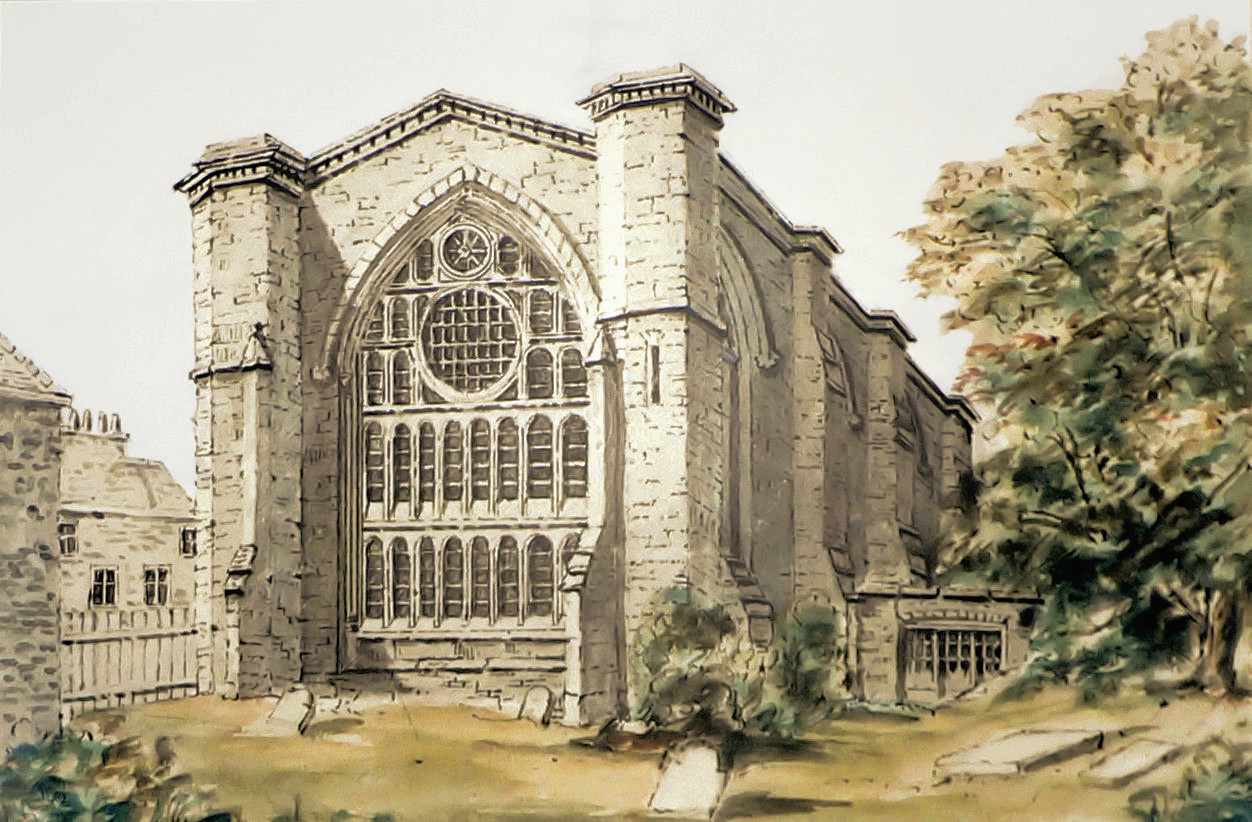
ST KATHARINE HOSPITAL, CHURCH AND DOCKS
As can probably be ascertained by the amount I have written, I find this a fascinating area! Its amazing history can be traced back to the 10th century when King Edgar gave thirteen acres of land to thirteen knights to enable them to trade in foreign goods.
The dock was built on the site of ‘St Katharine by the Tower’ – or to give its even earlier full name – The ‘Royal Hospital and Collegiate Church of St Katharine by the Tower’. (And in case you are wondering who Saint Katharine was … she was also known as Catherine of Alexandria, lived in the 4th century, was brutally tortured and eventually murdered for her faith. According to the Catholic Encyclopaedia, written in 1908, she is one of the most important saints in heaven.)
The Hospital of St Katharine was here built here around 1148 by Matilda, the wife of King Stephen, in memory of her two children who had died and been buried in the nearby Holy Trinity Priory at Aldgate.
It was to provide for a ‘Master, brethren, sisters and thirteen poor persons’, and built on land in the parish of St. Botolph without Aldgate, bought for that purpose from the priory of Holy Trinity, Aldgate. For its maintenance the Queen gave the hospital a mill near the Tower of London and the land belonging to it.
Around a hundred years later a dispute over the ownership of the land resulted in Queen Eleanor of Castile further endowing the Hospital and granting a charter ‘reserving the Foundation’s patronage to the Queens of England for ever.’
In 1442 it was granted a Charter of Privileges, so creating a ‘Liberty’, which meant that it was outside the control of the City of London, so could have its own court, officers and prison. It was also a ‘Royal Peculiar’ – meaning a church that is directly under the control of a monarch and not a bishop (Westminster Abbey is another – as is the Queen’s Chapel of the Savoy, still situated in the gardens of the Savoy Hotel). So, every reigning monarch since 1400 has been Patron of St Katharine’s and responsible for appointing the Master, as its head is officially known – and that is still the case today.
Primarily a religious community as well as a hospital for the poor, it continued its work for nearly 700 years. A sizeable community grew up around it and a very mixed bag it was too. One account written at the time said that the area was ‘inhabited by foreigners, vagabonds and prostitutes, crammed along narrow lanes …’, whilst in John Stow’s 1598 Survey of London he said it was ‘… inhabited by strangers [meaning foreigners] more in number than some cities in England.’
The reason this ‘sprawling labyrinth of little houses, taverns, narrow lanes’ grew up here was because St Katharine’s was outside the control of the City of London so foreigners were free to carry on trades, crafts and professions that they would not have been allowed to do within the City itself. Other people were known as ‘undesirables’, again those who weren’t allowed inside the City and so lived as close as possible to it.
Throughout the 18th century, the district continued to grow ‘offering sanctuary to both immigrants and the poor’. Transient sailors, including Lascar seamen who crewed East India Company ships, as well as Irish, Jewish and Scandinavian immigrants and ex-slaves from the Caribbean joined the local population. The result was a vibrant and often volatile community. It was also a popular place for ‘foreign’ ships that might not have been allowed to unload their cargo any closer to the City, particularly at times of ‘plague and pestilence’, for fear of bringing in disease.
By the early part of the 19th century London’s trade with the rest of the world had grown so much there simply wasn’t the space to unload ships on the Thames and a ship could wait for weeks before it could be unloaded. This obviously cost the shipowners – and their crews – a lot of money. The only answer was to build ‘inland docks’ away from the river and a group of men comprised of ship owners, merchants and bankers got together to form the London Dock Company.
It wasn’t long before those docks, which were on the Isle of Dogs and in Wapping, were struggling to cope with the ever-increasing demand, and more were needed. St Katharine’s was felt to be the ideal choice, being nearer to the City where the merchants were based, so a newly formed Docks Company paid just £125,000 to purchase the land where St Katharine Hospital and Church stood. These were both then demolished, together with over a thousand houses, slums and hovels that had grown up around them, which meant that thousands of people lost their homes, and none received any compensation or help – they were simply made homeless. And as overcrowding and poverty were already a huge problem in London, this just caused further misery. However, after much controversy, they spent a further £30,000 buying land and building a new St Katharine’s Hospital – actually almshouses – in Regent’s Park of all places! So much for its mission to help the poor and sick of the East End of London.
There it stayed for just over 100 years until in 1948 new premises were found on the site of the bombed St James’s Church in Limehouse for St Katharine’s, back in the East End, and those in Regent’s Park closed. The Royal Foundation of St Katharine offers facilities to both the local community as well as the wider church, with meeting rooms, a retreat, conference centre and hotel – a simple but unusual and pleasant place to stay – and fairly reasonably priced too.
St Katharine Docks
The new docks were designed by Thomas Telford and covered an area of 24 acres. There were three basins with six-storey warehouses built around them with an entrance lock into the Thames. Building began on 3rd May 1827 and work was completed less than two years later. Incredible when you think how much digging and construction was needed.
Each of the three basins specialised in specific imports, which included ivory, silks, spices, tea, perfumes, rubber, marble, indigo, cigars, wines and carpets – a wide variety of goods, but they all had one thing in common – they were valuable and needed secure storage; hence the stone-built warehouses that surrounded them. This was the pattern for other docks that were built both before and later. The most valuable cargoes had their own quay and adjoining warehouses, and those names are still in use today, such as Marble Quay and Ivory Quay. Indeed, ivory was one of the most valuable commodities and the Ivory House, with its prominent clock tower, is at the centre of the three basins. Over 200 tons of ivory arrived here each year (somebody once worked out that’s the equivalent of over 4,000 elephants) as well as hippopotamus and walrus teeth and mammoth tusks from Russia. A major reason for the demand for ivory at that time was the huge number of pianos being made – ivory was used for the keys as well as for jewellery and ornaments.
Unfortunately, St Katharine’s was only financially viable for a few years; the docks had been built to accommodate the size of ships around at that time, but those were rapidly becoming longer and wider and it wasn’t long before it became difficult for them to navigate the entrance lock, which affected its profitability. So by 1864 St Katharine Docks had merged with the neighbouring and much larger London Dock Company.
St Katharine Docks continued to be used by the smaller ‘lighters’, which could pass through the lock, until 1968 when it became the first of the London Docks to close. Redevelopment commenced in the 1970s, beginning with the construction of the Tower Hotel. That was followed by the various apartment and office buildings that surround it to this day. These apartments soon became very popular (and expensive) and notable residents have included ex-politicians David Mellor and Ruth Kelly and actor David Suchet. The docks themselves have been converted into a marina capable of holding up to 180 luxury yachts.
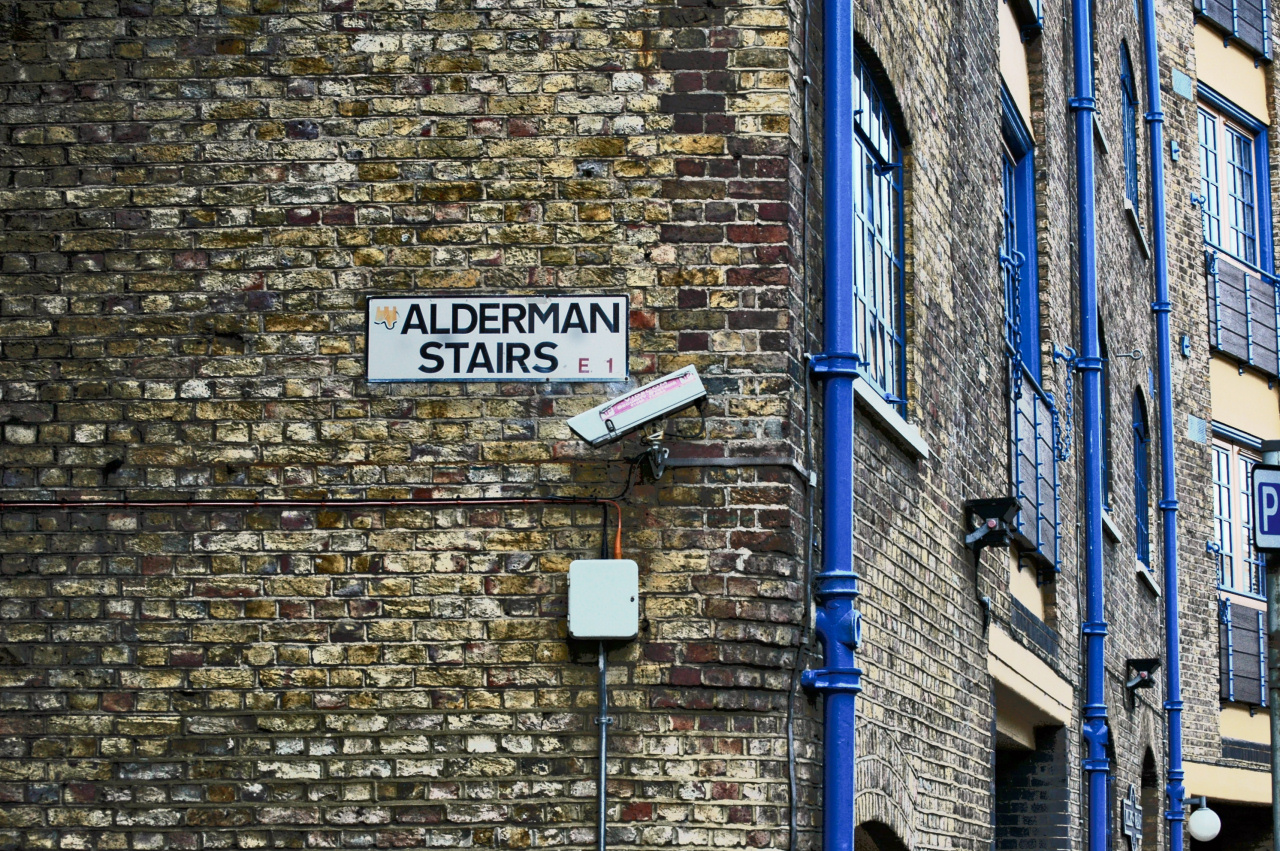
ALDERMAN STAIRS
I’ve put an interesting account that was originally in the Illustrated London News on the 23rd December 1843 and which I saw on the excellent ‘London Inheritance’ website that was taken from the Illustrated London News, dated 23rd December 1843.
“CHRISTMAS FARE – On Sunday night the Dublin Steam Navigation Company’s steam-packet Royal William, Captain Swainson, arrived at her moorings off the Alderman-stairs, Lower East Smithfield from Dublin, Falmouth and Plymouth. She brought a miscellaneous cargo, part of which consisted of a large quantity of geese, turkeys, and other Christmas fare, for the metropolitan markets. In the course of Saturday and Sunday a number of steam-packets arrived in the river with large quantities of geese, turkeys, and other kinds of poultry, for Christmas cheer. Last week, several vessels arrived at Fresh-wharf, London-bridge with cargoes of varied fruits. Most of the stage-coaches which arrived in the metropolis on Tuesday and during the week brought very large quantities of geese, turkeys, hares, &c.”
Alderman Stairs were also a departure point for regular shipping routes for both passengers and parcels. Departures and routes were regularly advertised in the newspapers, for example, in the Shipping and Mercantile Gazette on the 18th April 1838, the St. George Steam Packet Company was advertising that:
“Vessels sail regularly from off Alderman-stairs, below the Tower for:
PLYMOUTH, FALMOUTH and CORK, and taking goods and passengers for Liverpool, every Saturday morning at 8 o’clock.
EXETER, calling off Deal, Ryde and Cowes (weather permitting), every Wednesday morning, at 8 o’clock.
BOSTON – The SCOTIA, on Tuesday morning, the 10th April, at 4 o’clock, and every succeeding Tuesday at the same hour.
STOCKTON (at reduced fares), calling off Scarborough and Whitby, weather permitting – The EMERALD ISLE, every Saturday night at 12 o’clock, returning every Wednesday.
Goods to be sent to the St. George Steam-wharf, Lower East Smithfield.”
The London Inheritance website goes onto say, “Passengers arriving off Alderman Stairs ran the risk of being overcharged for their transport between ship and shore, as an article in the Morning Post on the 29th September 1847 reports: A report in the Evening Chronicle on the 30th October 1840 also highlights the risk to travellers arriving in London by Alderman Stairs.”
The report was about another waterman, a certain William Vallance, who was a member of the ‘Jacob-street gang of steam boat rangers’. In the reported case, Vallance had been directed to meet the Dublin steam-ships when they arrived off Alderman Stairs, however the members of the Jacobs Street gang would persuade their passengers to be taken to another landing point where they could be charged significantly more. The Jacob Street gang would also “on arrival of a steam ship the Jacob-street gang managed to board the vessel while the crew were busily engaged in mooring the vessel, and seized any luggage they could lay their hands on, which they lowered into a boat, generally having a fellow of very questionable character ready to receive it and stow it away”.
Theft of goods from the ships moored on the Thames and from the warehouses that lined the river was a continuous problem, and had led to the formation of the Thames River Police.
The Thames River Police would frequently question people carrying goods along the river, on land, or at the river stairs. If they could not give a satisfactory explanation for why they were in possession of the goods, they would be arrested for theft. Newspapers often carried long lists of those arrested, and the goods they were found with. On the 3rd September 1821, the Public Ledger and Daily Advertiser included an “E. Bateman who was found with 1lb of sugar at Alderman Stairs” without being able to give any satisfactory explanation of why he was in possession of the sugar.
Thanks to the excellent London Inheritance website for providing me with this information. It’s certainly fascinating to stand at the top of these stairs and imagine the countless thousands of people who have used them as their gateway to the river and then beyond.
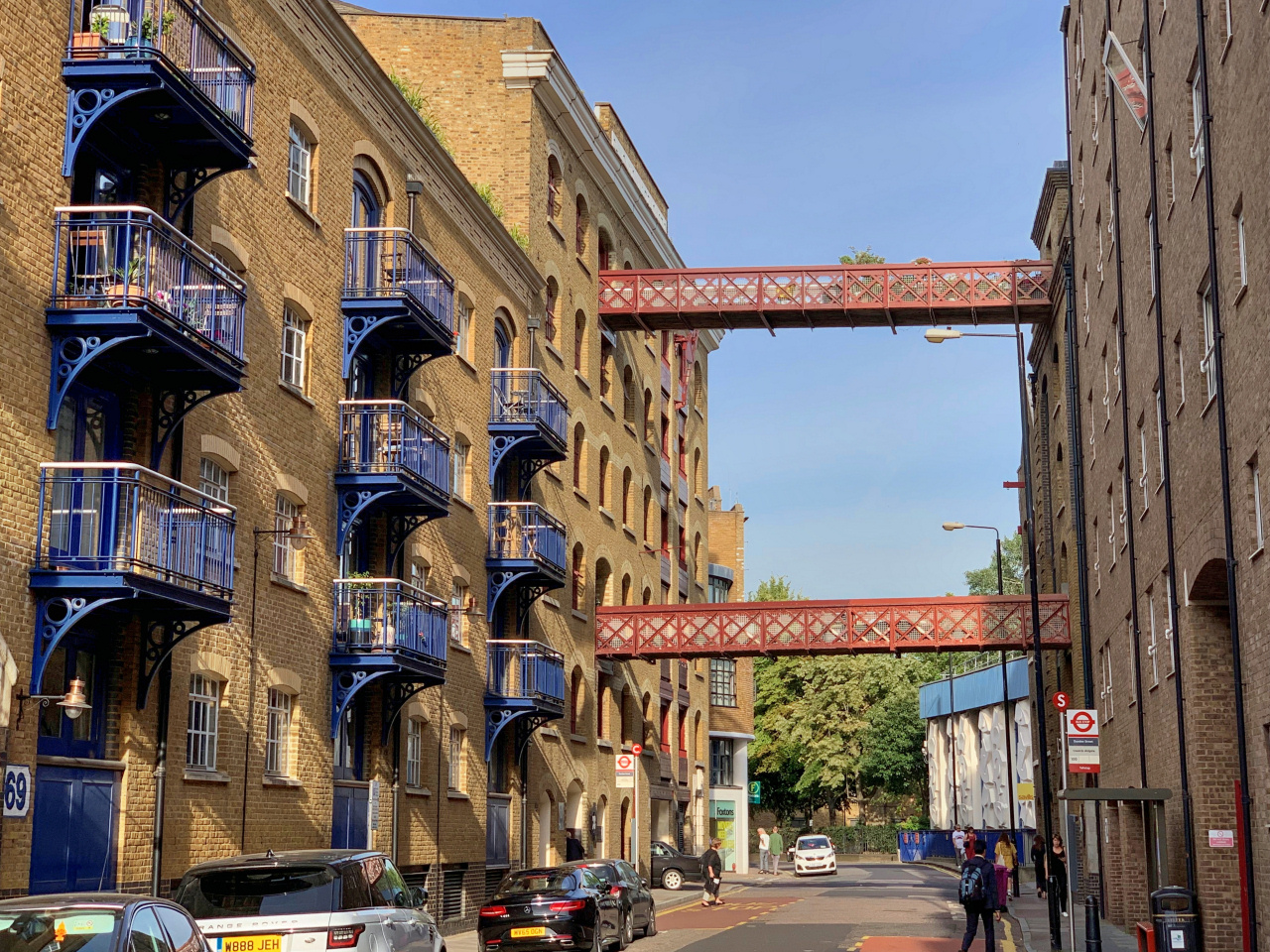
WAPPING AND ITS HIGH STREET
A few words here about Wapping and its High Street – which must surely be the only High Street in Britain with no shops! However, at one time it had over thirty pubs – of which only three are now left. The street was built in the 1500s to link the riverside quays down river with the City of London. The 16th century London historian John Stow described it as a “filthy passage, with alleys of small tenements and cottages ….” He went on to say that many inhabitants were “victuallers who supplied sailors with maritime equipment and just as importantly cheap alcohol and women” – and this maritime connection existed for many years.
In ‘A New View and Observations on the Ancient and Present State of London and Westminster in 1730’, it says Wapping was “formerly of one great wash, covered with the waters of the Thames. Afterwards it was by pains and art, gained from the river and made a meadow ground, commonly now called Wapping Marsh, and was defended from the interruption of the Thames by Walls”. Indeed, this whole region was so rural – just marshes and forests – that in 1629 King Charles I, having hunted a stag in Wanstead in Essex, killed it in a garden in Nightingale Lane in Wapping.
The name Wapping is said to have originated from an Anglo Saxon called Waeppa who started a community here. It was then mainly marsh land over which the Thames would regularly flow when in flood, with just a few higher ‘dry spots’ where people must have settled. Indeed, it was many hundreds of years later before the work of draining the area actually started.
Like many communities along this part of the Thames, Wapping was an isolated place, but this was made worse when the docks were built. Surrounded by warehouses and high walls to prevent theft, Wapping became cut off from the rest of the East End. In addition, the construction of the docks resulted in thousands of local people being moved out of their homes, ripping the heart out of the community and adding to further deprivation. As with Limehouse, the area continued to suffer from terrible poverty. Dockers could go for weeks without work – and therefore without any money and, remembering that their wages generally provided little more than subsistence in the first place, there was slim chance of them having anything put aside to help during those bad times.
The area was particularly devastated by bombing during World War II, with many of the warehouses being destroyed beyond repair. For years it was a very neglected and forgotten part of London, but then in the 1980s developers began restoring and renovating the warehouses that had been damaged, and building on the bombsites, and the resulting trendy apartments have made the area very popular, attracting an eclectic mix of new residents, from wealthy Canary Wharf bankers to celebrities such as TV chat show host Graham Norton.
‘Hanging Judge Jeffreys’
I have mentioned Judge Jeffreys in several places in the walk, particularly when we visit the Town of Ramsgate pub, where he was finally arrested.
There’s further information in a book put together by Walter Thornbury in 1897 called ‘Old and New London’, when he quotes from W.M. Thackeray’s account of Judge George Jeffreys arrest. Although nicknamed the ‘Hanging Judge’ for his enthusiasm to put to death by hanging of many of those who appeared in court before him, (often regardless of the severity of their offence), his official title was a Baron. He had been a Welsh Judge, but during the reign of King James II rose to the position of Lord Chancellor. Unfortunately, he backed the ‘wrong King’, and was himself arrested. The following piece, written by Thackeray, gives us more of an insight to the event.
“A scrivener who lived at Wapping, and whose trade was to furnish the sea faring men there with money at high interest, had some time before lent a sum on bottomry. The debtor applied to equity for relief against his own bond and the case came up before Jeffreys. The counsel, for the borrower, having little else to say, said that the lender was a trimmer. The chancellor instantly fired, ‘A trimmer! Where is he? Let me see him. I have heard of that kind of monster. What is he made like?’ The unfortunate creditor was forced to stand forth. The chancellor glared fiercely on him, stormed at him, and sent him away half dead with fright. ‘While I live’ the poor man said as he tottered out of court, ‘I shall never forget that terrible countenance.’
“And now the day of retribution had arrived. The ‘trimmer’ was walking through Wapping when he saw a well-known face looking out the window of an ale-house. He could not be deceived. The eyebrows had indeed been shaved away. The dress was that of a common sailor from Newcastle and was black with coal-dust; but there was no mistaking the savage eye and mouth of Jeffreys. The alarm was given. In a moment the house was surrounded by hundreds of people, shaking bludgeons and bellowing curses. The fugitive’s life was saved by a company of the Trainbands; and he was carried before the Lord Mayor.
“The mayor was a simple man, who had passed his whole life in obscurity, and was bewildered by finding himself an important actor in a mighty revolution. The events of the last twenty-four hours and the perilous state of the city which was under his charge had disordered his mind and body. When the great man, at whose frown just a few days before, the whole kingdom had trembled, was dragged into the justice room begrimed with ashes, half dead with fright, and followed by a raging multitude, the agitation of the unfortunate mayor rose to the height. He fell into fits, and was carried to his bed, whence he never arose. Meanwhile, the throng was constantly becoming more numerous and more savage. Jeffreys begged to be sent to prison. An order to that effect was procured from the Lords who were sitting at Whitehall; and he was conveyed in a carriage to the Tower.
“Two regiments of militia were drawn out to escort him and found the duty a difficult one. It was repeatedly necessary for them to form, as if for the purpose of repelling a charge of cavalry, and to present a forest of pikes to the mob. The thousands who were disappointed of the revenge pursued the coach, with howls of rage to the gate of the Tower, brandishing cudgels, and holding up halters full in the prisoner’s view. The wretched man meantime was in convulsions of terror. He wrung his hands, he looked wildly out, sometimes at one window, sometimes at the other, and was heard, even above the tumult crying, ‘Keep them off, gentlemen! For God’s sake, keep them off!’ At length having suffered far more than the bitterness of death, he was safely lodged in the fortress, where some of his most illustrious victims had passed their last days, and where his own life was destined to close in unspeakable ignominy and terror.”
Jeffreys was never hanged and died of an illness while being held in the Tower of London in 1689, where he was at first buried. Several years later, and for reasons I don’t know, his remains were taken to the City church of St. Mary Aldermanbury, which I cover in the City of London walk 1.
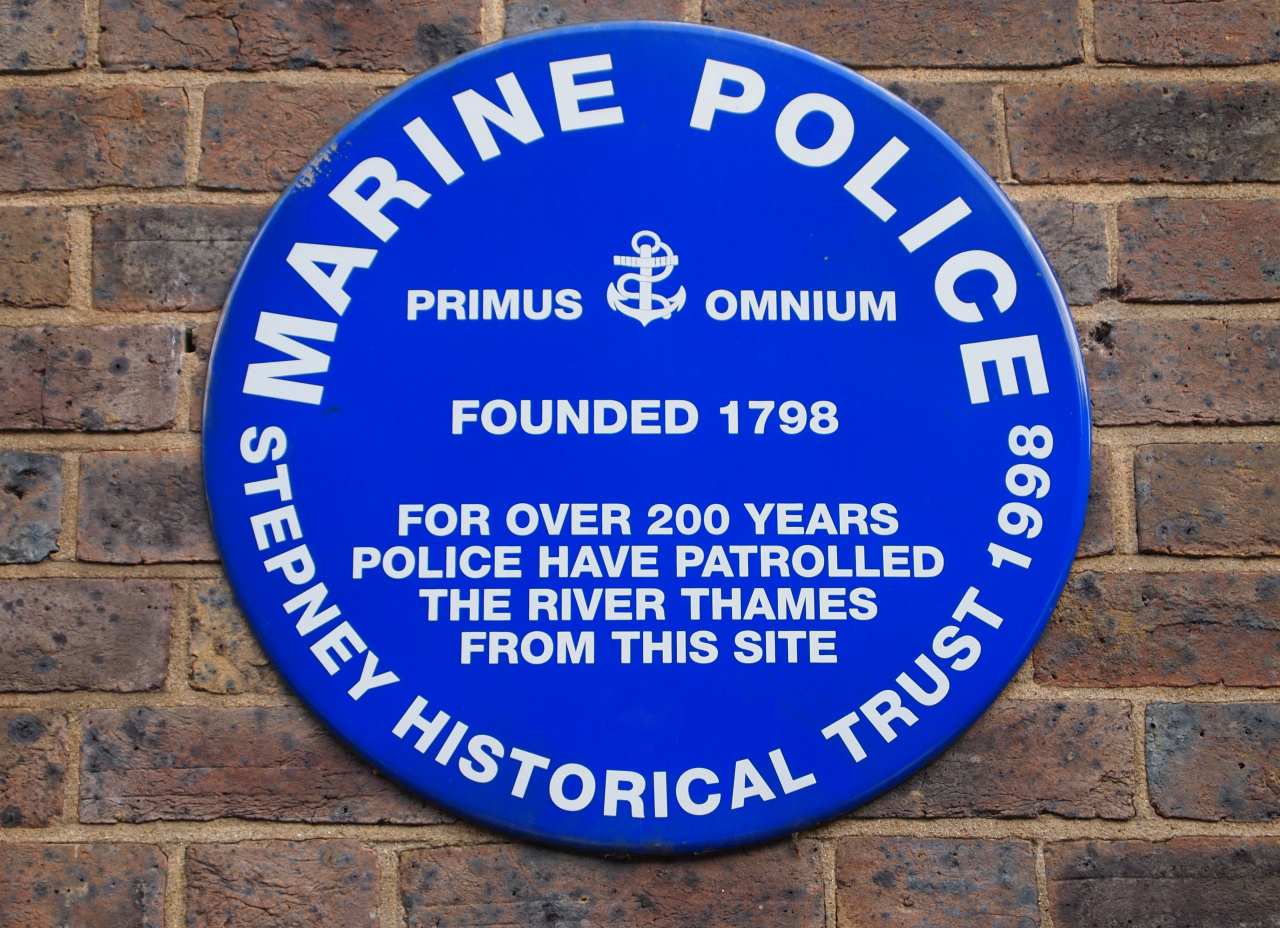
THAMES RIVER POLICE
The Thames River Police was set up in 1798 to deal with theft from the many hundreds of ships constantly moored in the river whilst waiting to be unloaded, many of which had holds full of valuable cargos. It was said that you could walk from one side of the river to the other by stepping across the decks of the ships moored there. Thieving was rife –up to 30% of all cargo was pilfered, either from the ships themselves or from the quaysides or warehouses, resulting in losses of half a million pounds a year – a staggering amount of money in those days! In addition, many cargoes were unloaded without duty being paid, which seriously affected Government revenues. The situation had become so bad that a local magistrate, Patrick Colquhoun, together with John Harriot, an ex-sailor and Justice of the Peace together with a Unitarian philosopher called Jeremy Bentham, persuaded the West India Company to set up a private ‘police force’, said to be the first organised police force in Britain and probably the world.
At its inception the ‘West India Merchants and Planters Marine Police Institute’ as it was called, had just 50 men – not a lot considering there were over 35,000 men working in the docks and maritime industry in the area and around 11,000 of them were said to have been ‘known criminals’. Needless to say, those ‘criminals’, together with the many others who would have benefitted from the proceeds of all this crime, did not take kindly to having their activities curtailed and, shortly after the police station opened, over 2,000 of these aggrieved men marched on the building and attempted to burn it down. Amazingly only one ‘policeman’ was killed and fortunately their attempts were unsuccessful. By the end of the first year of its activities they were said to be saving the Company ‘vast amounts of money’, as well as being responsible for saving the lives of many drunken people who regularly fell into the Thames.
Its success resulted in an Act of Parliament in 1800 that made it a public and not a private body, with responsibility for all the ships on the Thames and not just those of the West India Company. Twenty-nine years later the Metropolitan Police Force was formed by Robert Peel and ten years later the two forces combined. The Marine Police then became known as the Thames Division, which continued until just a few years ago when it became the ‘Marine Policing Unit’. Besides the original Wapping Station, the Marine Police eventually had two other stations, one at Blackwall and another at Waterloo.
I find the life and career of Patrick Colquhoun fascinating – born in Scotland and orphaned at the age of sixteen, his relatives sent him to Virginia in America to work in the cotton trade. There he became involved in the American Revolution and now aged twenty-one, he returned to Scotland to help fund a ‘Glasgow Regiment’ to support the British Government’s battle with the Americans. He then built an estate in Glasgow, became Lord Provost of City and founded the Glasgow Chamber of Commerce. He was a brilliant statistician and collected economic data with which to lobby the British Government and whilst doing so met with Prime Minister Pitt. This got him involved in British politics and he moved to London where he eventually became a magistrate in the East End.
As a result of his subsequent involvement in policing as well as social problems, he wrote a number of books on the subjects and his views are said to be the basis of much of British policing, particularly crime prevention, to this day. (Oh … and he was later appointed Consul General of the German cities of Hamburg and Bremen … gosh, don’t some people just make you feel inadequate!)
One of my favourite books is HV Morton’s ‘The Spell of London’, which was written and published in the 1920’s. It’s a collection of essays on many different aspects of London life, and I love his description of a night out with the Thames River Police – and I quote this extract –
“Wapping Stairs. A clock struck twelve; and a high, cold moon shone over the river. I stood muffled to the eyes in an ulster as I waited for the patrol boat of the river police, which was to take me out on a night’s hunting. There was no sound but the tide ebbing from the Thames mud with lapping, sucking noises. Downstream a melancholy siren gave a banshee wail and was silent. Round me were shadows and lamplight, pale over dreary alleyways; sinister steps led down to the exposed ooze that gleamed like polished silver in the light of the moon. What an eerie spot. I remembered every ‘shilling shocker’ that I have read. I saw, in imagination, ‘the gang’ creep from shadow to shadow, I heard the splash of a falling body, the swift sound of pursuit, and then, cutting the darkness, the call of a whistle and … There it was! A whistle. Out of the night it came. This was no imagination. A dark shape detached itself from the dancing quicksilver of the river, and I heard the soft throbbing of the patrol boat and saw her green bow lights as she swept in towards land. “Good evening Sir”. I returned the salute of a dark form in a peaked cap and I stepped aboard. The engine purred, the boat swung around and away we went, into the dark mystery of the downstairs reaches.”
Within the police station there is a small museum dedicated to the history of the River Police. It’s run by two former officers and is only open only by prior appointment. They have a fascinating collection of memorabilia, artefacts, photographs, etc., going right back to the very earliest days of the River Police.
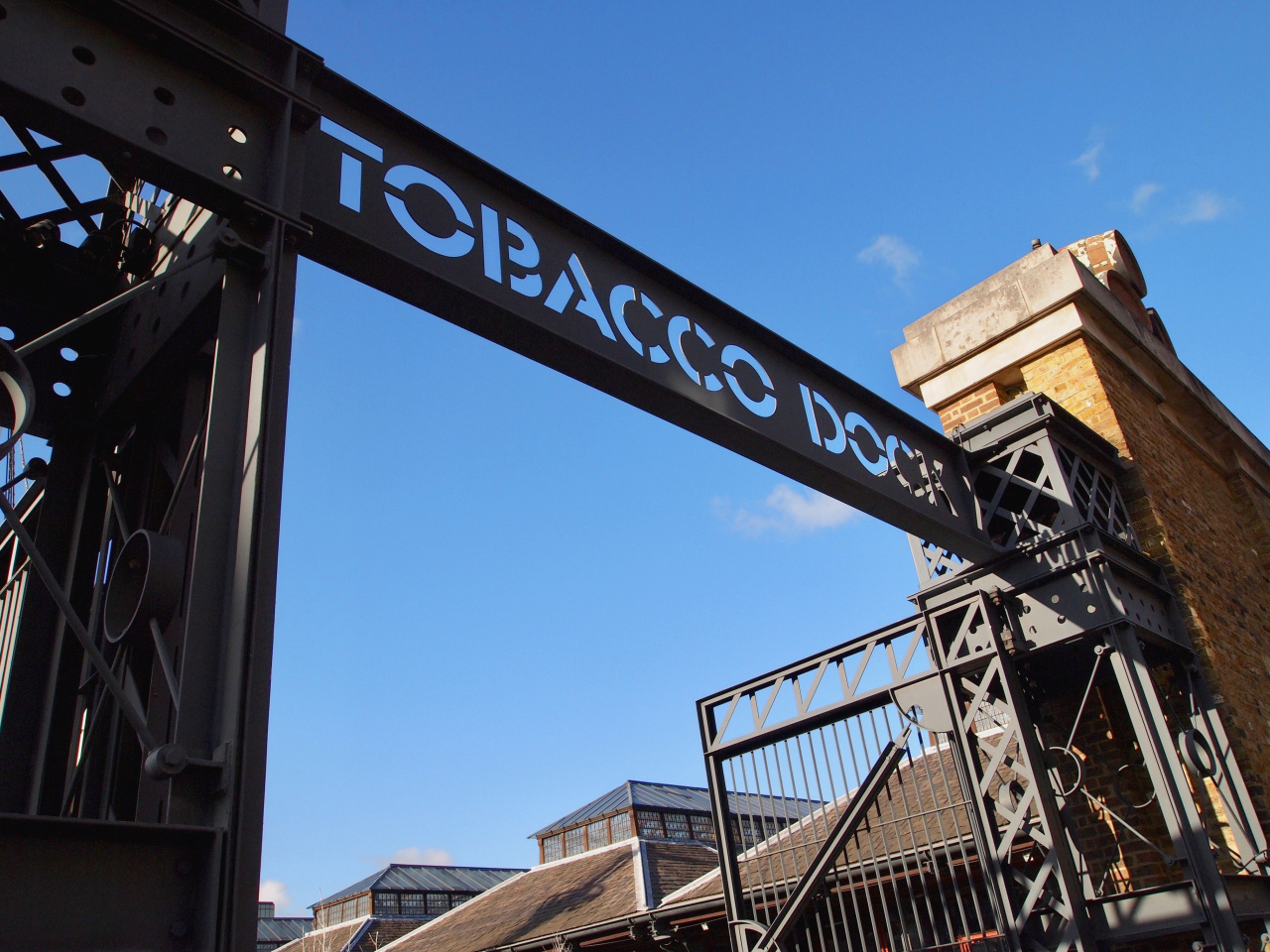
TOBACCO DOCK
Tobacco Dock was built by Docks Architect Daniel Alexander and opened in 1814 as a safe and secure warehouse to store tobacco, wines and spirits as well as furs and skins. Indeed, to this day it still looks ‘fortress like’.
Tobacco was brought to these docks from America, Turkey, Russia and China and by the mid-1930s over 45,000 tons a year were being imported. As a result this area became known as ‘Tobacco Road’.
The building survived the war time bombing, though after the docks had begun to be run down it laid empty for a number of years. Then in the 1980s it was bought by London East End entrepreneur and businessman Laurie Cohen who persuaded the newly set up London Docks Development Company not to demolish it, as they had originally planned, but to turn it into what at the time was called the ‘Covent Garden of the East’. The LDDC even contributed over £1 million towards the conservation and restoration of the building. The project cost up to £50 million in total but in the 1990s recession the shops began to close and it became uneconomic and was closed down. It is now used only for exhibitions and other special events as well as by film companies.
Fortunately, Tobacco Dock is a listed building and I understand there is now a planning application by the Kuwaiti family who own it for it to be once again turned into a trendy shopping complex – again saying it will be the “Covent Garden of the East End’ – but this time besides the ‘trendy boutiques there will be a ‘designer hotel’ and over 800 luxury apartments. Quite how they will manage all of that in a Grade I listed building I really don’t know!
From the outside it’s hard to appreciate its vastness. Huge cast iron pillars support a wooden roof and there are massive underground storerooms.
In front of Tobacco Dock are two sailing ships, the Three Sisters and the Sea Lark. The former is a replica of an American built merchant schooner that was captured by the Admiralty during the Anglo- American War. The other is a replica of the Sea Lark, a 330-ton ship that once bought tobacco and spices to London and which was built at the Blackwall Yard in 1788. Unfortunately, these are not open to the public to look around.
Running along the front is a preserved section of the canal that used to link the Hermitage Basin and the Western Docks with Shadwell Basin further east.